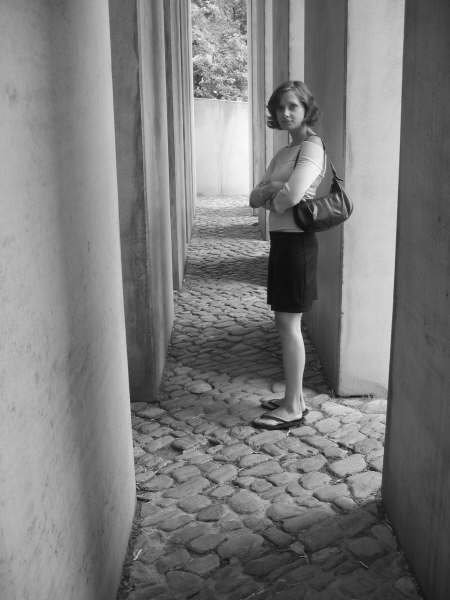 If you have not yet visited the Visual Complexity website, I highly recommend that you do. Even if you're completely uninterested in the visualization of complex networks, some of the projects that the site features are extraordinary pieces of art in their own right. The image on the left, for example, represents a yeast protein interaction network.
If you have not yet visited the Visual Complexity website, I highly recommend that you do. Even if you're completely uninterested in the visualization of complex networks, some of the projects that the site features are extraordinary pieces of art in their own right. The image on the left, for example, represents a yeast protein interaction network.As Visual Complexity's "about" page states, network visualizations have the potential to communicate complex networks clearly to a user. "(T)he whole (of a network) is always more than the sum of its parts", this page explains. If we can visualize a complex network, we can come to understand more about our world. To be sure, our friend the yeast protein, though beautiful, does still look confusing. A simpler example is a metro map. Grace Fourie has written a great post on the application of thinkmaps for educational purposes. I agree wholeheartedly with her thoughts on how such visualizations can help us understand the multitude of connections that comprise(d?) the past.
As an addendum to my post on a network of Canadian museums and memorial sites of all kinds, I believe we can use such an interface to help us make better use of such important institutions. Canadians can certainly boast a wealth of galleries, monuments and memorial spaces, museums and information centres, databases, archives, research and documentation centres and associations, veterans groups and historical societies (to name but a few spaces and groups that indicate something about the past). Each one of these spaces or groups is part of our national historical and memorial landscape. Each one is part of a network. It's a complex network, and one with many, many nodes. [1]
I was inspired by Philip E. Agre's people-based way of judging the utility of a digital tool. He encourages the aspiring designer to pick a community, and figure out how a genre might "do more" for that community than the one it uses currently. Would a concept network help us understand the many, many nodes that comprise our heritage network? [2] Would it teach us about the relationships between them? Would it make them more accessible for us? Would it be a good marketing tool? An interactive Canadian heritage thinkmap could not, and should not, replace other important networking work. Inter-institutional conferences, joint exhibitions, and working groups would still be important. The interface would, ideally, be another arm of such 'real world' connections.
Yet, on the informational 'push' side, an aesthetically pleasing, user-friendly Canadian heritage association network interface could be a great new outreach tool. On the 'pull' side, the network's administrators could mine intentional data that users would produce in their clicking on the map, and in their keyword searches (presuming the network tool was also a database). Such data could tell administrators about the connections users make between heritage sites/groups. It could also reveal much about where users' demands, and interests, reside. All of this information could, I imagine, be used in developing ongoing outreach programs about our heritage network.
------------------------------------------------
1. "Node" is, actually, the perfect word to convey my meaning. My dictionary defines the term as: "a point in a network where lines cross or branch."
2. I have much to learn about the Department of Canadian Heritage, and about CHIN. Does something like this already exist under their purview?

No comments:
Post a Comment